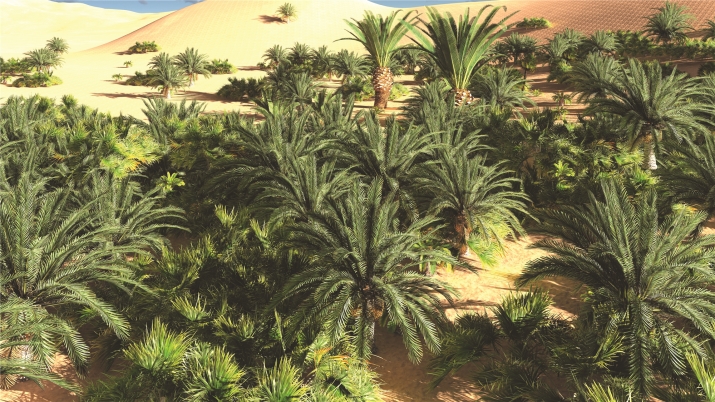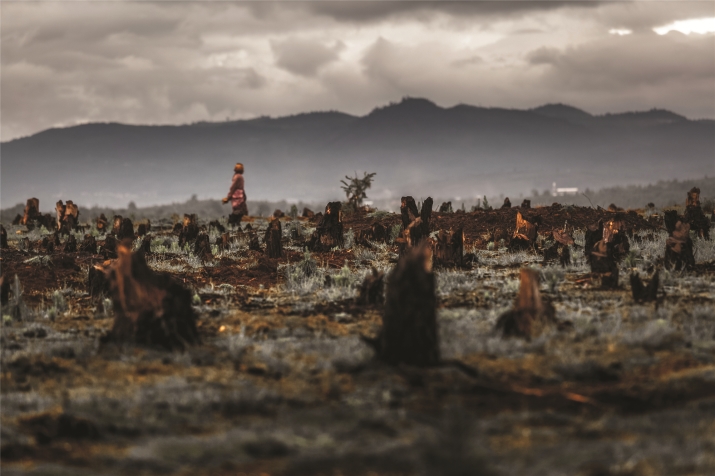|
||||||||||
| Home Nation World Business Opinion Lifestyle ChinAfrica Multimedia Columnists Documents Special Reports |
|
||||||||||
| Home Nation World Business Opinion Lifestyle ChinAfrica Multimedia Columnists Documents Special Reports |
| ChinAfrica |
| Taking up the Challenge |
| While some progress has been made in Africa's efforts to combat desertification, much more needs to be done |
| By Benard Ayieko | VOL.11 June ·2019-06-06 |

View of the Sahara Desert (HELLORF)
The celebrations to commemorate the World Day to Combat Desertification and Drought across the globe in June also mark the 25th anniversary of the United Nations Convention to Combat Desertification (UNCCD). The theme of this year's campaign is Let's Grow the Future Together. Celebrations are primarily meant to raise awareness that Land Degradation Neutrality can be achieved through providing solutions to existing desertification and drought challenges, enhancing strong community involvement and fostering multi-stakeholder cooperation. On June 17, environmentalists will celebrate 25 years of milestones achieved by citizens of various countries in promoting sustainable land management and reevaluate the next 25 years when Land Degradation Neutrality is to be realized through restoring degraded land and soil, including land affected by desertification, drought and floods.
Impact on Africa
There is no doubt that significant progress has been made globally in terms of combating desertification and drought. The UNCCD has contributed immensely to the advancement of sustainable land management since its adoption in 1994 - exactly 25 years ago. Today, the UNCCD's 197 parties are implementing this convention under coordinated and results-oriented actions with clear targets to recover and restore degraded land. The end goal is to protect land from overuse and drought so that it remains productive in generating food, water and energy for both humans and wildlife. Desertification is land degradation in arid, semi-arid, and dry sub-humid areas caused mainly by climatic variations and human activities.
In Africa, the removal of natural vegetation cover, especially for use as a source of fuel (firewood) for households, is a key source of desertification. Agricultural activities, livestock farming, logging and overpopulation in vulnerable ecosystems of arid and semi-arid areas have also emerged as a leading source of desertification in Africa.
It is no surprise that the global focus on this issue has turned the spotlight on efforts being made to combat desertification and drought in Africa, as the continent has become more vulnerable to the adverse effects of increased land degradation and drought. This has caused instability in some parts of Africa due to the inability to generate adequate food for its people in order to alleviate hunger and fight poverty on the continent. While causes of desertification are both manmade and natural, it's widely believed that overgrazing, deforestation, unfavorable farming practices and other adverse types of land development, climate change, stripping the land of resources and natural disasters have played a major role in land degradation in Africa.

Desertification is mostly the result of deforestation (HELLORF)
Great Green Wall of Africa
Since desertification curtails Africa's ability to produce agricultural products for its people, there has been an overarching desire for Africa to protect its arable land by ensuring that the effects of desertification and drought do not have a negative impact on food security. What is behind this and what measures are in place to deal with desertification and drought on the continent?
First, it is because of the pivotal role that arable land plays - as a key asset for farmers and, together with vegetation, in helping store carbon that would otherwise be emitted into the atmosphere and contribute to climate change. The United Nations Food and Agriculture Organization (FAO) estimates that, by the year 2030, Africa will lose two-thirds of its arable land if the process of desertification is not brought to a halt. This realization gave birth to the Great Green Wall, which was launched in 2007 by the African Union (AU), aimed at implementing programs to end or reverse land degradation and loss of biodiversity in African drylands and to ensure that ecosystems are resilient to climate change, continue to provide essential services and contribute to human well-being and the elimination of poverty and hunger.
The Great Green Wall has created synergies to combat desertification by bringing together 21 African countries under the coordination of the AU and with the support from international development and technical partners such as the European Union, the FAO, the World Bank and the UNCCD. Since the Great Green Wall was launched 12 years ago, there has been remarkable progress in dealing with the problem of desertification and drought in Africa. The greatest part of this success is seen in Sub-Saharan Africa.
According to statistics from the UNCCD, Ethiopia, Senegal, Nigeria, Sudan, Burkina Faso, Mali and Niger have significantly restored degraded land and planted trees to increase the forest coverage on the continent. In Ethiopia, over 15 million hectares of degraded land has been restored and land tenure security has picked up well. Senegal, one of the 16 West African countries, has recorded laudable progress as far as combating desertification and drought is concerned. The Senegalese have planted over 11.4 hectares of trees and restored over 25,000 hectares of degraded land. Nigeria has restored over 5 million hectares of degraded land and created more than 20,000 jobs in the process, especially for the youth and women. Sudan in Northeast Africa restored over 2,000 hectares of land, while Burkina Faso, Mali and Niger restored altogether over 2,500 hectares of land and planted in excess of 2 million seeds and seedlings of 50 native species of trees.
Sino-African cooperation
Despite the efforts to address desertification in Africa, challenges such as the lack of empowering local communities to seek livelihoods from other economic activities have been identified as key bottlenecks to its success. Other challenges include the lack of political goodwill to either legislate or enforce existing legislation, aimed at curbing land degradation. There has also been an inadequate funding for programs designed to deal with desertification and drought because of competing needs in the economies of Sub-Saharan Africa. Amid these challenges, it's imperative to note that solutions for desertification in Africa are now widespread and have taken a positive turn by way of introducing policy changes related to how people can farm and use their land responsibly, educating local communities on the best way of utilizing their land for farming, using modern technology, intensifying rehabilitation efforts for degraded land and inculcating sustainable practices in the populace to forestall possible land degradation.
As we continue to witness the growth of Sino-African relations, there is a need to learn and share knowledge and experience with China on how it was able to successfully deal with the issue of desertification, particularly in the Gobi Desert, with the forest belt project built in northwest, north and northeast China. The project was launched in 1978 and so far, over 66 billion trees have been planted resulting in an increase in China's forest cover and reduction in its land degradation. For the project to meet its ambitious target of restoring over 100 million hectares of degraded land, sequester 250 million tons of carbon and create over 10 million green jobs, there is need for China and Africa to strike a closer working relationship and come up with cooperative frameworks that will nip desertification in the bud. Any efforts to the contrary will only make World Day to Combat Desertification and Drought 2019 celebrations lose their true meaning - and if this happens, Mother Nature will not forgive us.
(The writer is an economist, consultant and regional commentator on trade and investment in Kenya)
(Comments to niyanshuo@chinafrica.cn)
| About Us | Contact Us | Advertise with Us | Subscribe |
| Copyright Beijing Review All rights reserved 京ICP备08005356号-5 京公网安备110102005860号 |